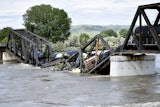Save time and money. In manufacturing, that's everything.
Every plant manager wants a more efficient and productive manufacturing facility. The quest to gain greater levels of performance and achieve greater savings drives them to be strategic, innovative and agile. They leave no stone unturned in the search for cost and time savings. This is a key reason why the industrial control and automation market is growing at a compound annual growth rate (CAGR) of about 8 percent every year and will reach $200 billion in the U.S. this year.
In my work with manufacturers over the years, I've seen some incredibly clever and result-producing ideas spawned by smart owners and managers who have learned to optimize technology, process and workforce to drive results. But one thing that confounds me is that many of these bright folks have yet to embrace the tremendous potential for plant optimization that literally hangs right over their heads — in the lighting system.
Not long ago, I toured a major U.S. production complex for a global consumer products company and I quickly zeroed in on the overhead lighting. What I observed underscores my dilemma. In this massive facility, with tens of thousands of square feet where state-of-the-art machines and hundreds of employees are hard at work, every space was lit by a patchwork of outdated, inefficient lighting that consume a lot of energy and maintenance resources.
It's enigmatic... state of the art equipment and people who operate it all being lit by inefficient, inconsistent lighting.
Too many manufacturing facility managers don't treat their lighting as a resource put through the same rigor as their other resources (machines/people) to demand better efficiencies and continuous savings. Traditional lighting is costly — it costs a lot of energy, a lot of maintenance — and it isn't prepared to address the challenges of today's plant, let alone the future.
Today there are energy-efficient, long-lasting LED luminaires and smart control systems that are tailored to every work area and job condition. Lighting solutions designed for production task areas, extreme-condition areas, offices and even outdoor spaces help move the manufacturing process along by reducing time and expenses tied to labor and maintenance, saving significantly on energy, enhancing productivity and streamlining facilities management. And, financing and rebate services let you implement LED lighting and remain cash flow positive in year one.
Here are the key ways LED lighting can help optimize a manufacturing facility:
Create savings by reducing energy use as well as ongoing labor and maintenance.
LEDs are energy efficient and long-lasting. Installing them in a manufacturing plant can generate annual energy savings of about 59 percent. Add in occupancy sensors, advanced control systems and other innovative technologies and the annual savings can leap to about 82 percent — with an average payback period of just two years.
Few things are more frustrating — or costly — to facility managers than having to shut down the production line to replace high-bay lights that have burned out. I know of a plant that loses $10,000 per minute when a line is shut down for lighting maintenance, and that's just not acceptable. LEDs are designed to last for years, virtually eliminating the need for sporadic maintenance to replace burned-out luminaires, and the direct and indirect costs associated with doing so.
Drive operational efficiency by increasing safety and productivity so resources can be reallocated.
Better lighting can also enhance worker safety by reducing potential hazards. Facilities with outdated lighting often have a problem when employees — say, forklift drivers — need time for their eyes to adjust to the poor lighting conditions when entering or leaving the facility. Instant-on LEDs eliminate that problem, while occupancy sensors can dim the lights when the facility is unoccupied.
Provide visual comfort, reducing worker fatigue and supporting higher, more consistent production.
Numerous research studies document the relationship between lighting conditions and human performance, as well as mood. Working for an extended period in insufficient lighting can lead to worker fatigue. Conversely, exposure to appropriate levels of light can make employees more alert, thus happier and safer. Higher light quality in critical-task areas reduces mistakes that could be a detriment to efficient and effective production. LED luminaires can be configured to correctly reveal colors for greater accuracy in tasks, such as parts selection and placement.
Prismatic Skylights natural daylight improves employee morale, reduces absenteeism, decreases human errors and increases productivity. Prismatic skylights use advanced optical designs to capture light at low sun angles, which can eliminate the need for electric lighting during the daylight hours. These high-performance skylights maximize light transmission while still providing 100 percent diffusion. With use of photocontrols, electric lighting responds to daylighting for increased energy savings.
Increase flexibility, providing control over the lighting environment that evolves as the operation grows.
Today, the best performing lighting systems network together easily, even wirelessly, to set practical lighting schedules. Wireless communication between fixtures, sensors and wall stations offer superior lighting-management capabilities. These networks eliminate the installation challenges and field issues of wired solutions yet deliver the reliability facility managers are accustomed to with a traditional wired solution.
Digitally controlled lighting boosts savings, increases luminaire life and offers stress-free code compliance. Regulations change rapidly. These systems allow you to receive and manage demand response signals, or implement peak shaving strategies, to drive more savings. Individual fixtures or whole lighting zones can be configured according to changes in schedules, time of day, seasons or special projects. They also offer the freedom to rezone or move fixtures as the operation evolves and manage lighting at any level from the entire site to specific zones or single fixtures.
Better lighting = better work product = better business
Manufacturers are continually seeking to maximize efficiencies that help meet financial goals and generate competitive advantage. Despite slightly higher up-front costs, a networked lighting system with LED lighting technology and digital controls saves tremendously over time. Better-quality lighting overhead means safer, more efficient operations on the production floor. On multiple fronts, outdated lighting simply can't compete with today's smart lighting and controls.
By investing in a purpose-built LED lighting system that enhances productivity, improves safety, reduces maintenance costs, streamlines operations and increases energy savings, manufacturers can transform lighting from a necessary expense to a strategic asset.
And that can shine a spotlight of recognition on the savvy facility and finance managers who make it happen.
Mick Wilcox is Vice President, Strategic Marketing, for Acuity Brands Inc., a North American market leader and one of the world's leading providers of lighting solutions for both indoor and outdoor applications.























